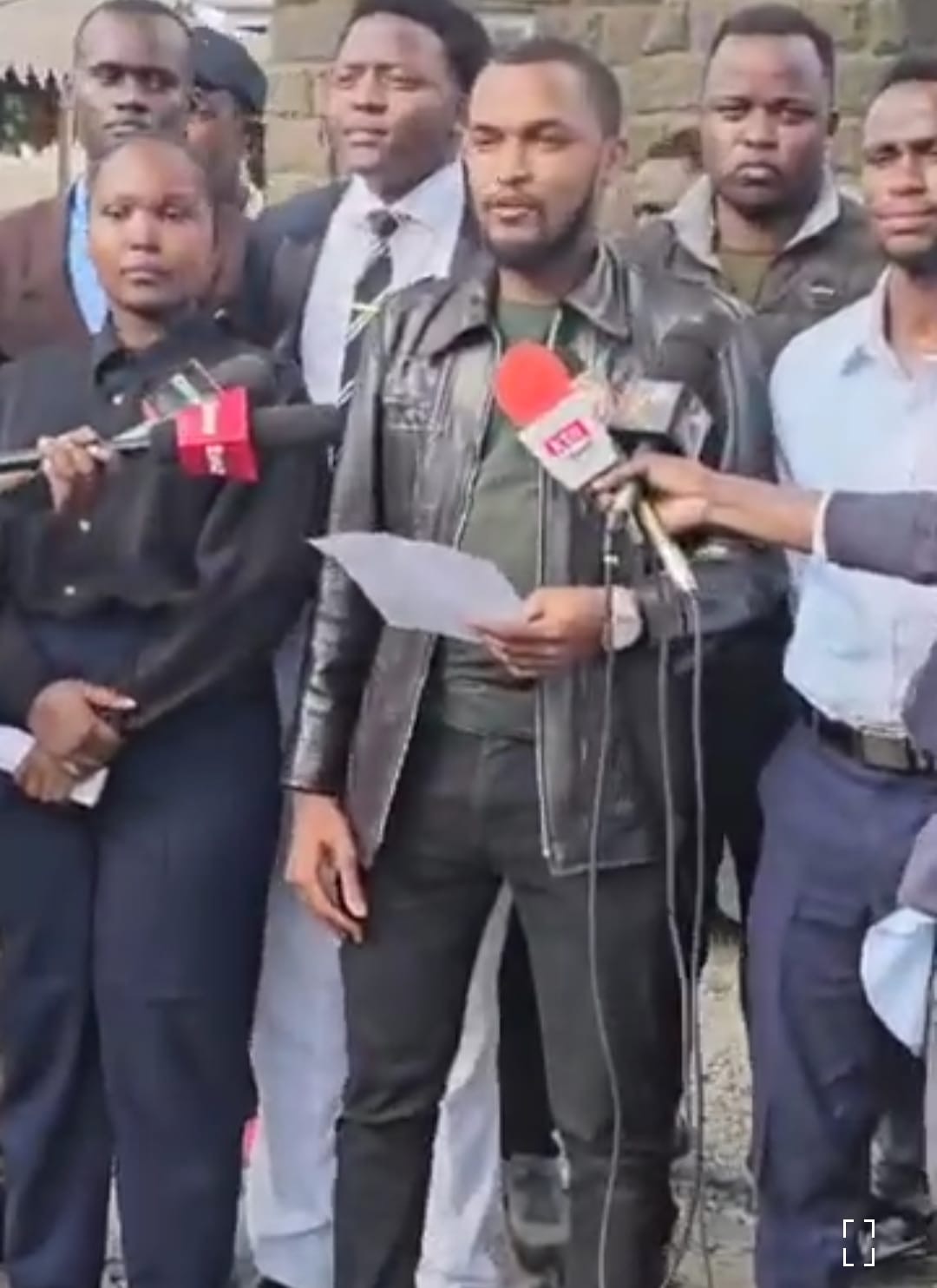News
University Student Leaders Mourn Endarasha Tragedy, Suspend Demos Over New Funding Model Until Mourning Period Ends

A coalition of university student leaders has temporarily halted planned demonstrations against the government’s new higher education funding model in the wake of the tragic Endarasha school fire. The suspension comes as the nation mourns the students who lost their lives in the fire.
Led by Rocha Madzao, President of the University of Nairobi Student Association, the student leaders condemned the Ministry of Education for failing to ensure safety in schools. “It is sad that such incidents are still happening in this century. We mourn as comrades alongside Kenyans,” said Rocha, expressing deep sorrow over the deaths.
While the focus of the leaders’ statements was the Endarasha tragedy, they also took the opportunity to criticize the new university funding model introduced by the government. Rocha stated that the new system excludes many needy students from financial support, putting their education at risk. He emphasized that although protests had been suspended out of respect for the mourning period, they would resume once the country had grieved.
“We are urging those being sent home due to lack of fees to contact us. We will liaise with their respective universities to address the matter once and for all after the mourning period,” Rocha added.
Naomi Chebet, President of the Kenya Methodist University Student Association, echoed Rocha’s concerns, calling for the government to scrap the new funding model. Chebet argued that the previous system, despite its shortcomings, was still better than the current approach, which she described as “impractical.”
“If the old funding model was unsustainable, then the new one is impractical,” she said. Chebet criticized the government for ignoring the concerns of student leaders, despite multiple meetings with the Ministry of Education and the President. She confirmed that students would resume their protests against the new model once the mourning for the Endarasha victims concluded.
The government’s new higher education funding model, which classifies students into four categories—vulnerable, extremely needy, needy, and less needy—has sparked widespread controversy. Critics, including student leaders, argue that many deserving students are left out, particularly those from middle-income families who struggle to afford higher education but do not qualify for significant government assistance.
Concerns have also been raised over the implementation of the model, with accusations of inefficiency and insufficient consultation with key stakeholders
Kenya Insights allows guest blogging, if you want to be published on Kenya’s most authoritative and accurate blog, have an expose, news TIPS, story angles, human interest stories, drop us an email on [email protected] or via Telegram
-

 Investigations2 weeks ago
Investigations2 weeks agoHow Land Grabbing Cartels Have Captured Ardhi House
-

 Business1 week ago
Business1 week agoPanic As Payless Africa Freezes With Billions of Customers Cash After Costly Jambopay Blunder
-

 Business2 weeks ago
Business2 weeks agoSHOCKING LOAN SCANDAL: Mwananchi Credit Slammed for Turning Sh7 Million Loan Into Sh22 Million Debt Trap
-

 Africa2 weeks ago
Africa2 weeks agoPredators of South Sudan: Young “Guardians” Loot Billions
-

 News1 week ago
News1 week agoSCANDAL: Cocoa Luxury Resort Manager Returns to Post After Alleged Sh28 Million Bribe Clears Sexual Harassment and Racism Claims
-

 Business2 weeks ago
Business2 weeks agoMwananchi Credit Faces Massive Lawsuits After Court Flags Predatory Lending That Left Customers’ Loans Ballooning
-

 Investigations2 weeks ago
Investigations2 weeks agoHow Arrest of a Soldier’s Spouse Dragged KDF Into Alleged Theft of Meth Haul in Mombasa
-

 News1 week ago
News1 week agoRentokil Boss Fraser Branch in Highway Smash as DUI and Racism Claims Surface



















